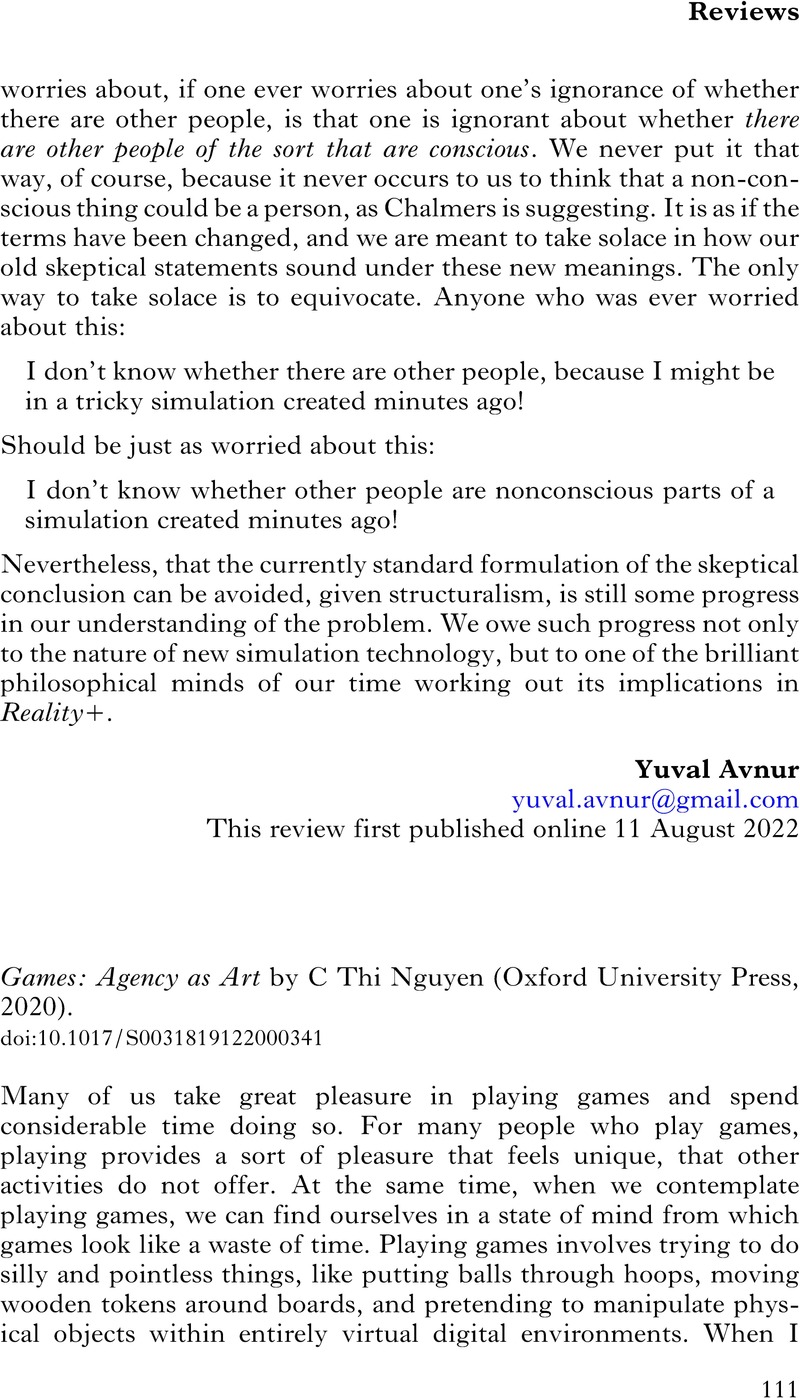No CrossRef data available.
Article contents
Games: Agency as Art by C Thi Nguyen (Oxford University Press, 2020).
Review products
Published online by Cambridge University Press: 11 August 2022
Abstract

- Type
- Review
- Information
- Copyright
- Copyright © The Author(s), 2022. Published by Cambridge University Press on behalf of The Royal Institute of Philosophy
References
1 ‘Games and the Good’, Aristotelian Society Supplementary Volume 80 (2006) 217–35.
2 Achievement (Oxford: Oxford University Press, 2015).
3 Play Matters (Cambridge, Massachusetts: MIT Press, 2014).
4 Gingerich, Jonathan, ‘Freedom and the Value of Games’, Canadian Journal of Philosophy 48 (2018) 831-49CrossRefGoogle Scholar.
5 Nguyen, C Thi, ‘The Opacity of Play: A Reply to Commentators’, Journal of the Philosophy of Sport 48 (2021), p. 449CrossRefGoogle Scholar.
6 Suits, Bernard, The Grasshopper: Games, Life and Utopia (Toronto: University of Toronto Press, 1978), p. 41CrossRefGoogle Scholar.
7 Suits, op cit p. 176.



